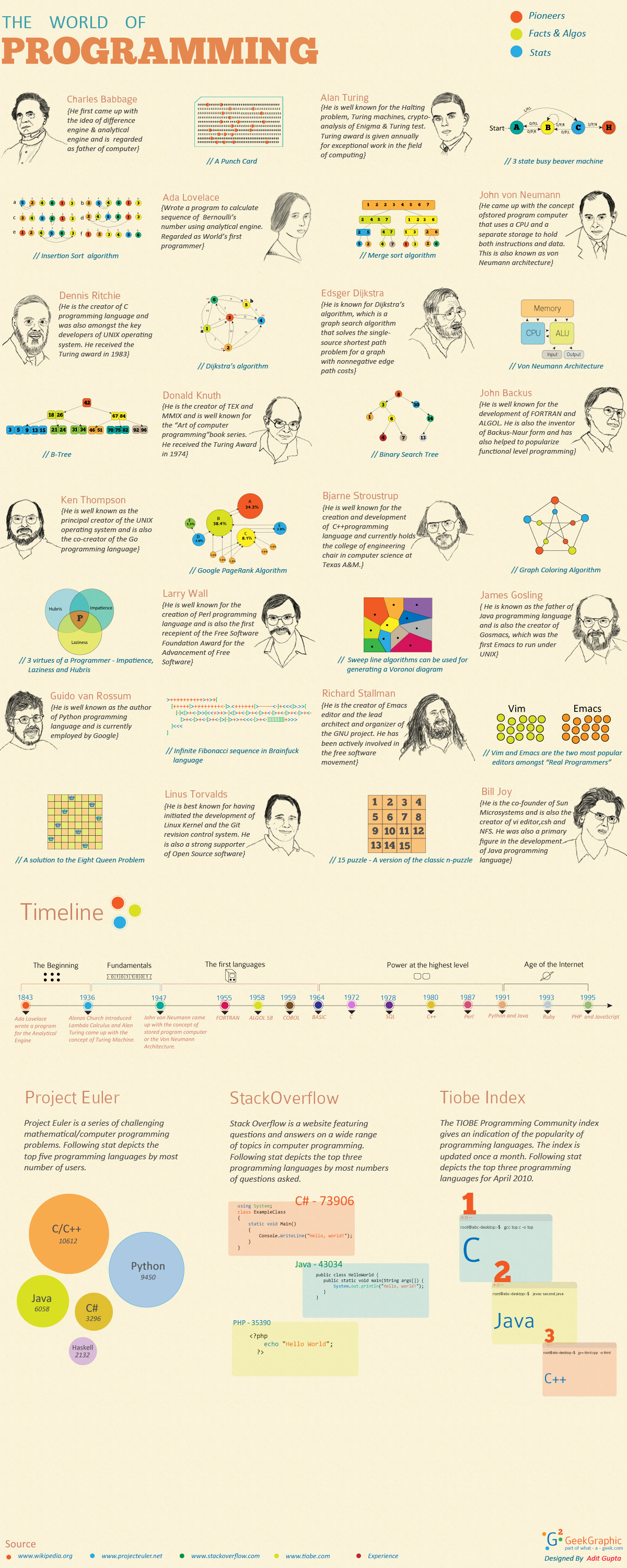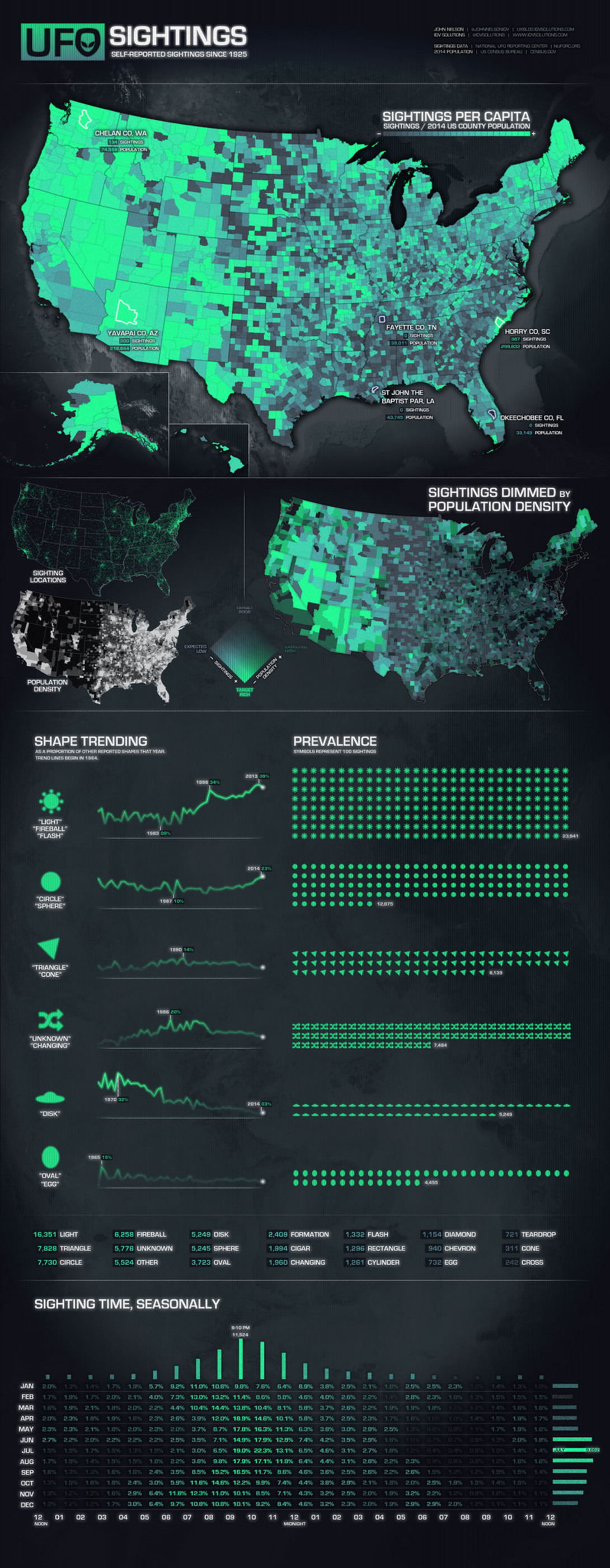The Algorithmic Genesis of Our Modern World: Reflections on “The World of Programming”
This appropriately entitled infographic, “The Realm of Programming,” serves as a masterclass in how to condense the colossal mélange of ideas, individuals, and technologies of our modern digital world. It is, in effect, not just a historical timeline but a tapestry of intellectual achievement. This infographic tells a narrative that elucidates how computation became the substrate upon which human creativity now thrives.
Still, like all the concentrated forms of great storytelling, it incites a deeper digging. Why these folks? Why these reckonings? And why this representation of the coding? Let’s sort through it.
The Genesis of Computation: A Conspiracy of Intellects
At the top, we meet the “pioneers.” Not merely names, figures like Charles Babbage, Ada Lovelace, and Alan Turing are rendered here as avatars of abstract thought made into concrete forms. We might think of Babbage and what he conceptualized in the analytical engine. Work like his is about something less tangible than machines: with the analytical engine, he was proposing a different kind of idea altogether an idea concerning the mechanization of human reasoning.
This idea, born in the mid-19th century, found its intellectual equivalent in Ada Lovelace, who envisioned computation as something that could transcend mere arithmetic. This brings us to the crucial insight that from the very outset, programming was not seen as something done with machines but as an endeavor requiring creativity a conception that resonates even now.
Alan Turing’s contributions are far too great to condense into a few sentences. His Halting Problem isn’t just an algorithmic puzzler; it’s a metaphor for human incapacity to deal with infinite possibilities. To come up with such ideas in the midst of World War II is a reminder that human innovation often flourishes under the pressure of existential threats.
The Paradigms of Language: A Tower of Babel?
The infographic pays homage to the individuals who have developed programming languages Dennis Ritchie, John Backus, and their ilk. And this is where it gets really interesting. Programming languages are indeed tools, but they also exist as something more profound: as philosophical treatises.
Think about C, for instance. It is a high-level programming language that has minimalism, efficiency, and control in other words, just what the philosophy of Unix demands. Not everyone sees it that way. To some people, if a language is an effective vehicle for executing a program, then it is efficient. That means they would regard the Lisp language and its dialects, which on the face of it are not so diverse as all that, as efficient because they are effective vehicles, and not regard C as efficient, though it is diverse enough to allow all sorts of programming expressions. And when C is part of an effective vehicle for executing a program, is it not just driving home the Unix philosophy?
Algorithms as Philosophy: Dijkstra and Beyond
The infographic shifts from talking about pioneers to the realm of “facts and algorithms.” Here, we come across the name Edsger Dijkstra, who is revered for his eponymous pathfinding algorithm. What guides me to the real heart of this visualization is the space it carves to illustrate “basic philosophical undertones.” I believe what’s most compelling isn’t just Dijkstra’s immediate, practical utility for something we all use daily (i.e., “think Google Maps”). Instead, I’m attracted to the almost existential meditation on optimization: the most efficient path through a complex system of choices. After all, isn’t that what life is?
Similarly, mentioning the Merge Sort algorithm and B-trees highlights a fundamental programming concept: at its core, programming is about putting things in order. Whether you’re ordering data or building decision trees, programming is the art and science of making the impossible seem effortless.
The Culture of Code: From Stallman to Linus
Discussions about programming cannot happen without considering cultural aspects. The infographic smartly includes not only key personalities like Richard Stallman and Linus Torvalds but also figures who, though not quite as well known, still command respect in their circles and have meaningful things to say about matters related to programming. For instance, including an individual like Peter G. Neumark, who I would venture to guess is not on many people’s radar, really exemplifies what is wise about this infographic.
The project GNU, initiated by Stallman, makes a radical statement concerning the ownership of ideas in the digital age. On the other hand, the Linux kernel, created by Torvalds, represents the triumph of meritocracy. Together, these two counter-narratives to corporate dominance thrust an alternative vision into the public sphere, one where communal programming serves as the wellspring for the next technological breakthrough.
A Unified Theory of Programming
The implicit argument of this infographic is that programming is not merely a technical discipline but very much an intellectual one, too almost a holistic, all-encompassing, intellectual encounter, the convergence of several quite different fields, like mathematics, logic, linguistics, and even philosophy. The image seems to be saying, in no uncertain terms, that the programmer’s work is something akin to an artist’s labor and is equally, if not more, a foray into the theoretical direction with, supposedly, the elegance in form somehow leading to some sort of impact in the real world.
An absence worthy of notice is the economics of programming. This infographic almost completely overlooks the economic forces that mold the coding contributions of its illustrious figures. It gives short shrift to the funding of Turing’s research by the U.S. government and to the corporate sponsorship of contemporary frameworks. To put it bluntly, the act of programming does not happen in a vacuum. This piece could do a better job of acknowledging that fact.
Metrics and Meaning: The Rise of Python
To sum up, the infographic’s statistical data Project Euler, Stack Overflow, and the TIOBE Index show Python’s really incredible ascendance and gives further evidence of the language’s versatility and accessibility (despite a whole lot of competition). But what does this, if anything, say about the future of programming?
It could suggest a shift from specialization to generalization, from control in a low-level way to control in a high-level abstraction. Python’s dominance is not just because of its syntax; it is rather because of a more profound and far-reaching trend: the programming world is increasingly accessible to everyone.








